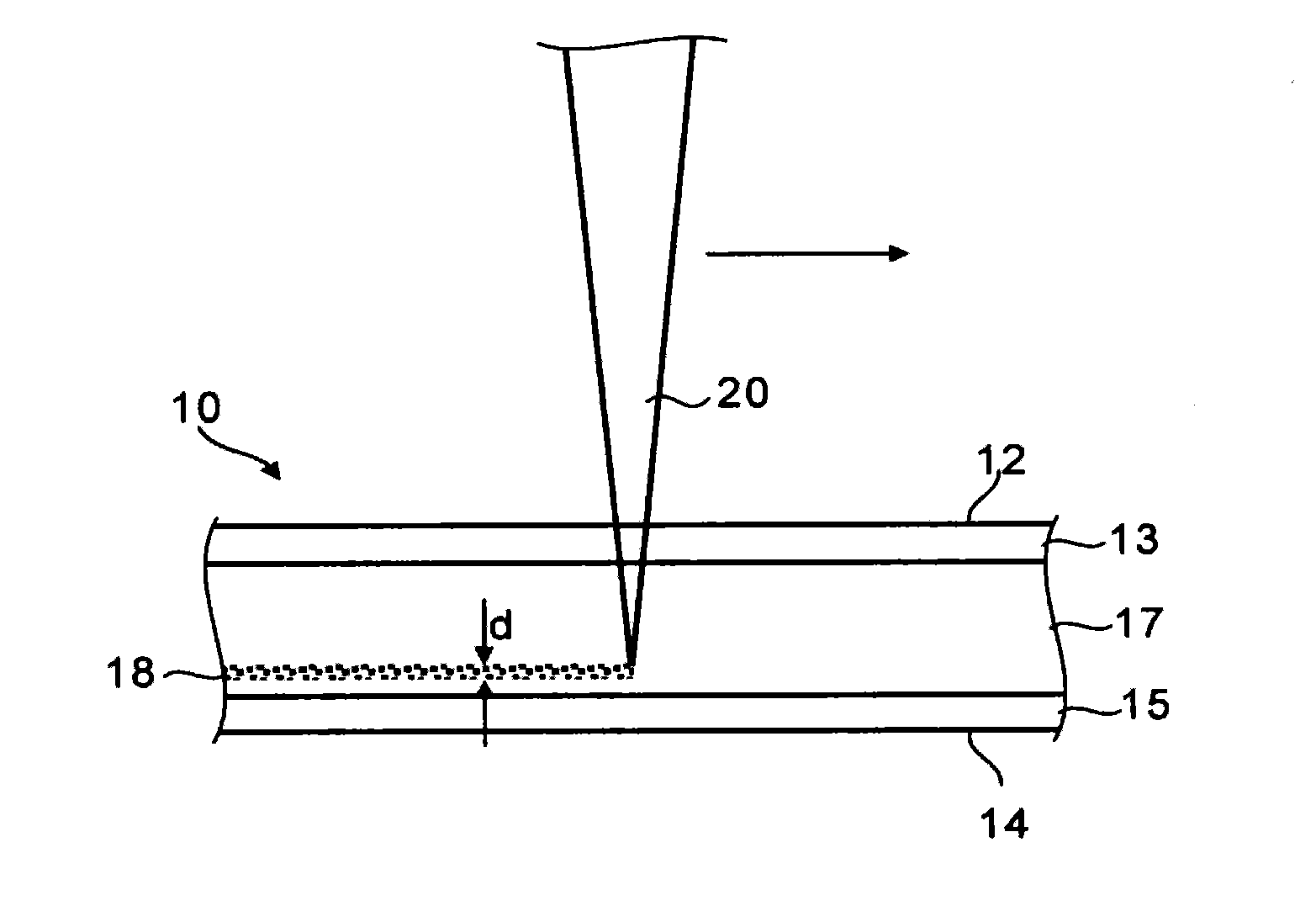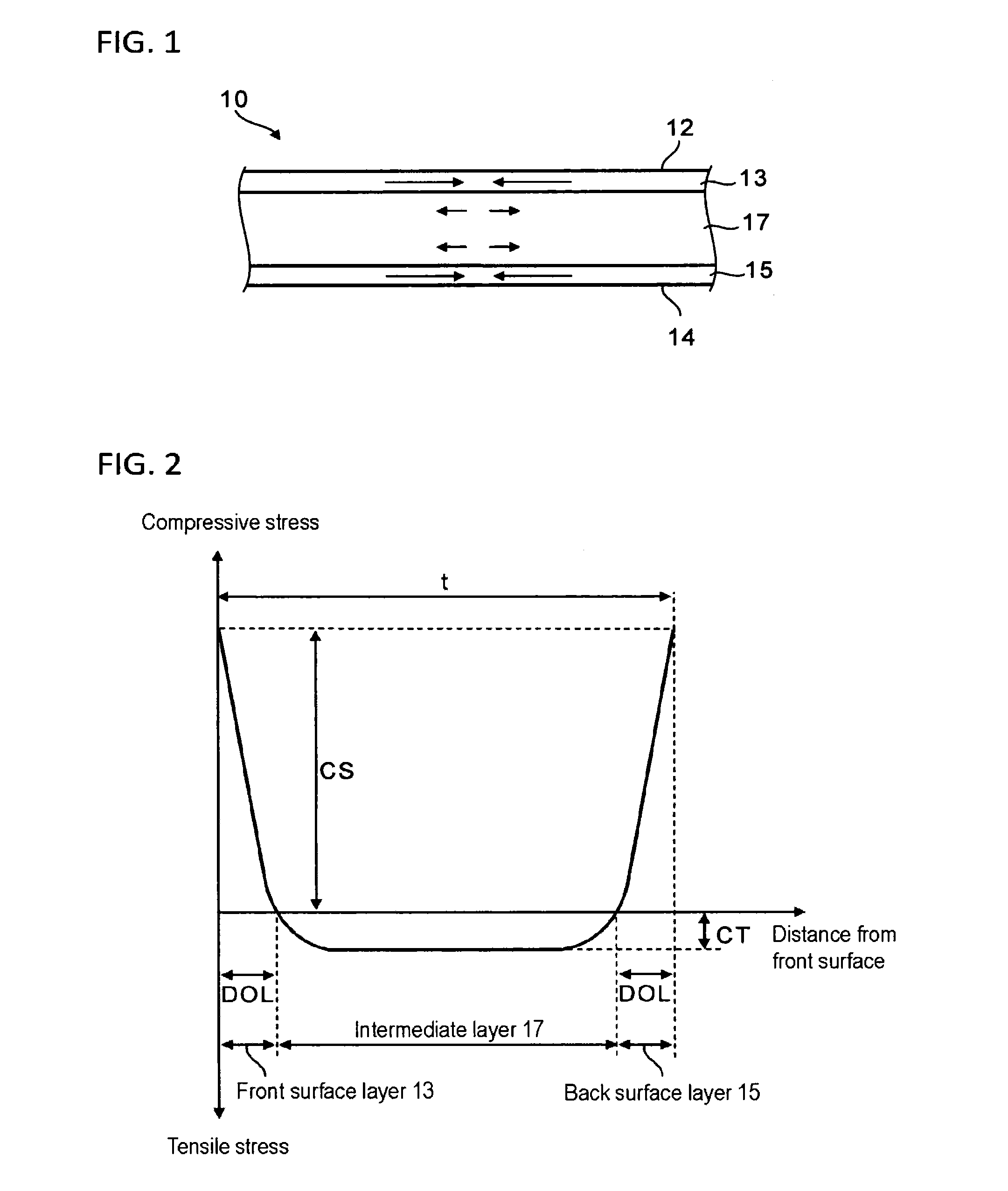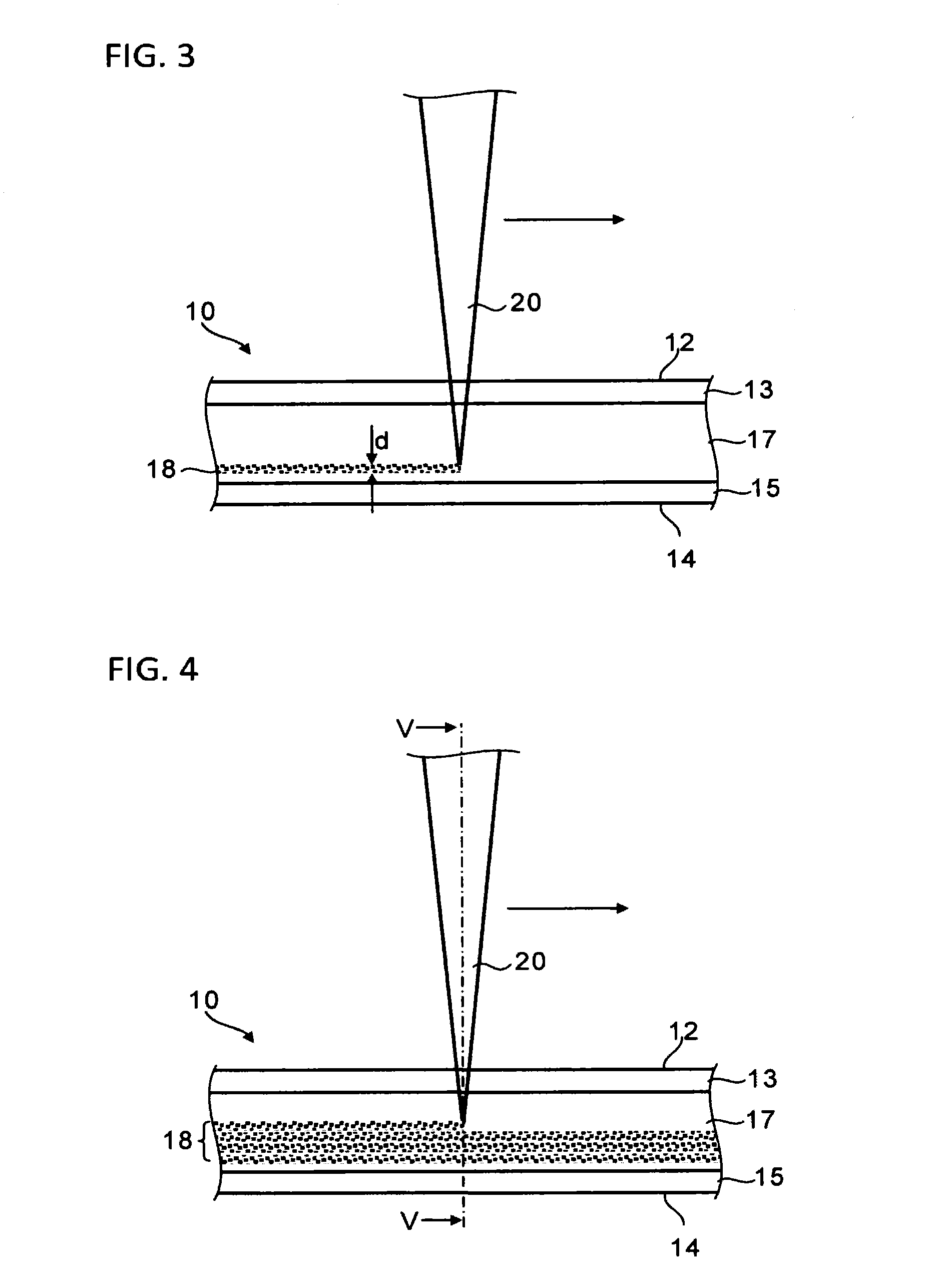Method for cutting toughened glass plate
- Summary
- Abstract
- Description
- Claims
- Application Information
AI Technical Summary
Benefits of technology
Problems solved by technology
Method used
Image
Examples
embodiment 1
[0046]First, the structure of a strengthened glass sheet and a method for cutting a strengthened glass sheet using internal reforming through laser light will be described with reference to FIGS. 1 to 5.
[0047]The structure of the strengthened glass sheet will be described with reference to FIGS. 1 and 2. FIG. 1 is a cross-sectional view of a strengthened glass sheet 10 before irradiation of laser light. In FIG. 1, the direction of an arrow indicates an acting direction of a residual stress, and the size of the arrow indicates the intensity of the stress. As illustrated in FIG. 1, the strengthened glass sheet 10 includes a front surface layer 13, a back surface layer 15, and an intermediate layer 17 provided between the front surface layer 13 and the back surface layer 15. In the front surface layer 13 and the back surface layer 15, a compressive stress remains due to the following air-quenching strengthening method or a chemical strengthening method. In addition, as a counteraction ...
example 1
[0081]In Example 1, the scanning of laser light irradiation was repeated on seven kinds of chemically strengthened glass sheet samples until the samples were divided, and the widths of the reformed regions at the time of the samples being divided were measured as the critical widths dc of the reformed regions.
[0082]FIG. 9 is a table describing the characteristics values and cutting results of the strengthened glass sheet. Specifically, from the left column, the table sequentially describes sample numbers, the thicknesses t (mm) of the strengthened glass sheets, the thicknesses DOL (mm) of the front surface layers and the back surface layers, the surface compressive stresses CS (MPa), the internal tensile stresses CT (MPa), the number of times of the scanning (SCAN TIMES), and the critical widths dc (mm) of the reformed regions.
[0083]The internal tensile stress CT of the strengthened glass sheet was measured by measuring the surface compressive stress CS and the thicknesses DOL of th...
PUM
| Property | Measurement | Unit |
|---|---|---|
| Thickness | aaaaa | aaaaa |
| Thickness | aaaaa | aaaaa |
| Distance | aaaaa | aaaaa |
Abstract
Description
Claims
Application Information
 Login to View More
Login to View More - R&D
- Intellectual Property
- Life Sciences
- Materials
- Tech Scout
- Unparalleled Data Quality
- Higher Quality Content
- 60% Fewer Hallucinations
Browse by: Latest US Patents, China's latest patents, Technical Efficacy Thesaurus, Application Domain, Technology Topic, Popular Technical Reports.
© 2025 PatSnap. All rights reserved.Legal|Privacy policy|Modern Slavery Act Transparency Statement|Sitemap|About US| Contact US: help@patsnap.com



